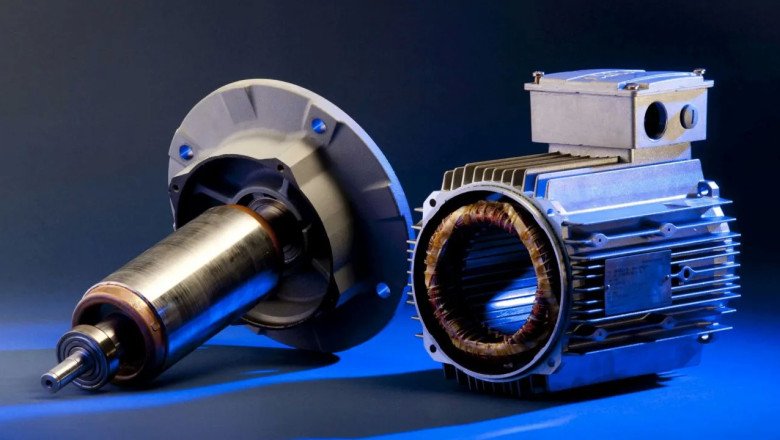
views
Electric vehicles (EVs) are rapidly changing the automotive landscape. At the heart of these clean-running machines lies the electric motor, the unsung hero responsible for converting electrical energy into the driving force that propels the car. Unlike internal combustion engines with many parts, electric motors are marvels of engineering, offering a simpler, more efficient way to power vehicles.
Electric motors for cars come in various configurations, but they all share a core principle: magnetism. The two main components are the stator and the rotor. The stator, the stationary part, houses electromagnets created by coils of wire. When an electric current passes through these coils, a rotating magnetic field is generated.
The rotor, the spinning part, typically consists of a permanent magnet or an electromagnet. The interaction between the rotating magnetic field of the stator and the rotor’s magnetism causes the rotor to spin, thus generating mechanical energy.
Electric motors offer several advantages over traditional combustion engines:
A popular choice due to its high efficiency and power density. Permanent magnets in the rotor interact with the stator’s rotating magnetic field, delivering smooth and powerful torque.
A robust and cost-effective option. The rotor’s current is induced by the stator’s rotating magnetic field, creating a simpler design but with slightly lower efficiency compared to PMSMs.
Offers precise control over speed and torque. Similar to PMSMs, they use permanent magnets in the rotor but are electronically controlled to achieve variable speeds.
Electric motors in cars use two main methods to get power to the wheels:
Similar to gas cars, the motor spins a shaft connected to a gearbox. This increases engine speed and torque for the wheels via a driveshaft and differential. (Pros: Simple, scalable. Cons: Less efficient, heavier)
Places electric motors directly in the wheels, eliminating the gearbox and driveshaft for potentially better efficiency and packaging flexibility. (Pros: More efficient, frees up space. Cons: Complex, new technology, expensive)
Electric cars offer flexibility in how they put the power down. Here’s a breakdown of the different configurations and placements for electric motors:
Electric cars don’t have a traditional “reverse gear” like gasoline cars. Here’s how it works:
Electric motors in cars generate heat during operation, and keeping them cool is crucial for optimal performance and longevity. Here’s a breakdown of the main cooling types used for electric motors in cars:
Those are all the important terminologies involved in the electric motors for cars. Read other automotive term guides here. If you are new to the automotive terminologies guide, we recommend giving the beginner’s guide a read.
Find used cars for sale in the UAE and new cars for sale in the UAE.
Subscribe to DubiCars’ WhatsApp Channel for the latest automotive news, guides, polls, and informative infographics.
Stay tuned to UAE’s most popular auto blog for more information about car mechanicals.
https://www.dubicars.com/news/electric-motors-for-cars-complete-guide.html






















Comments
0 comment